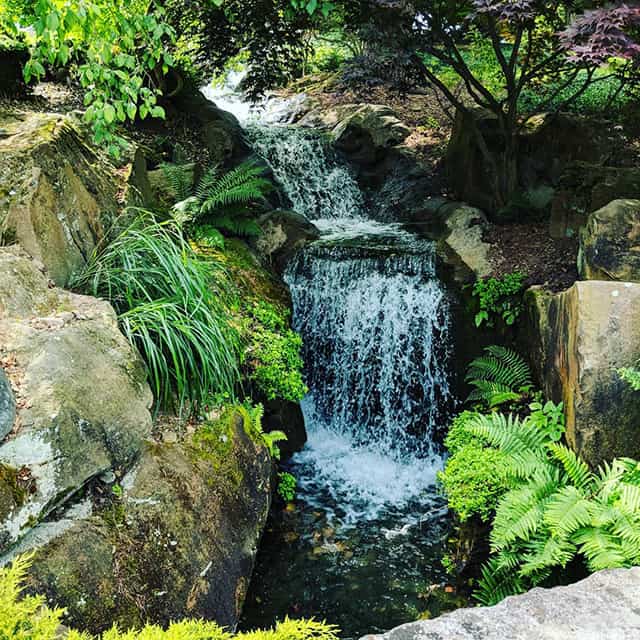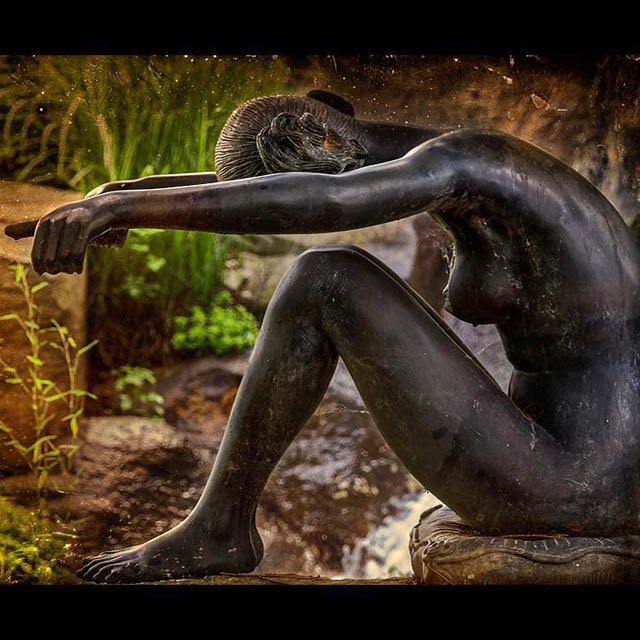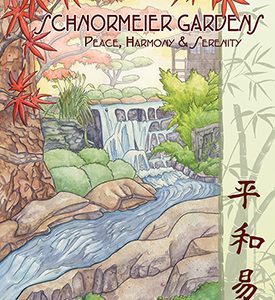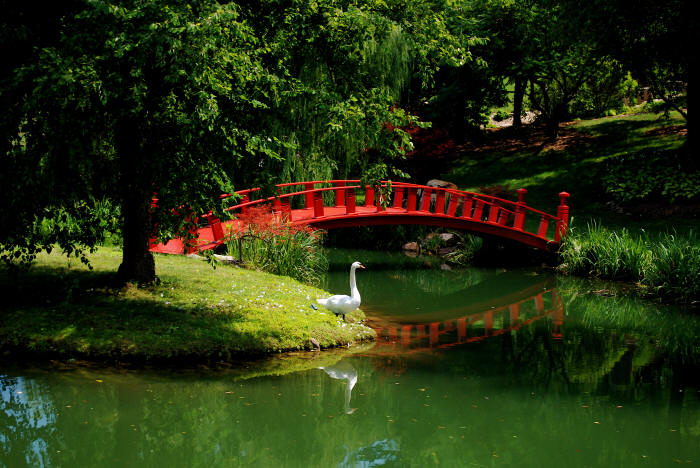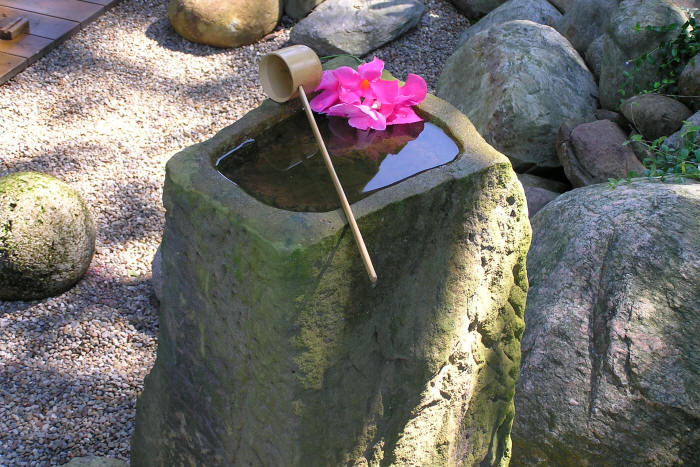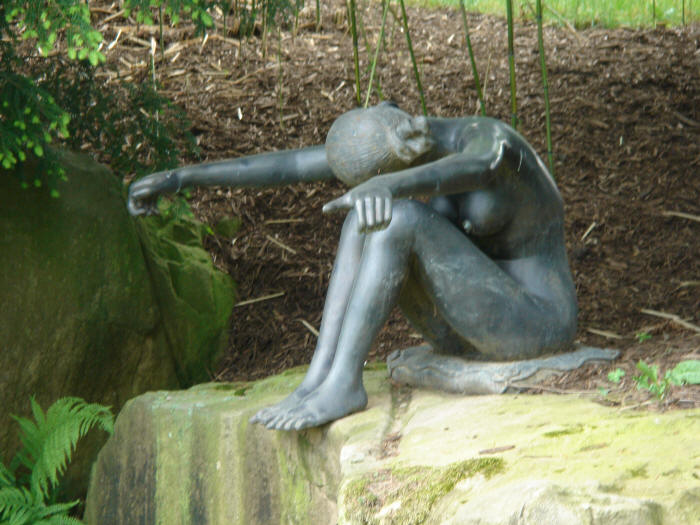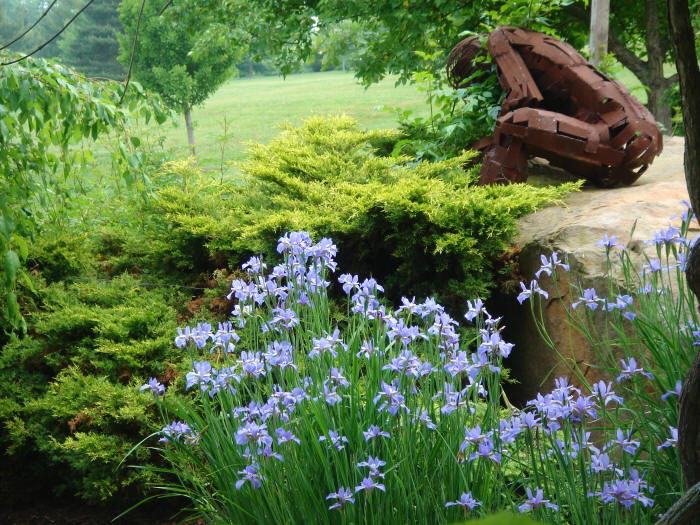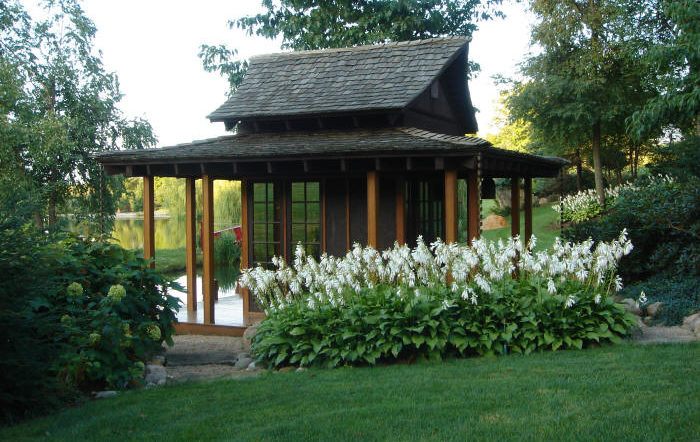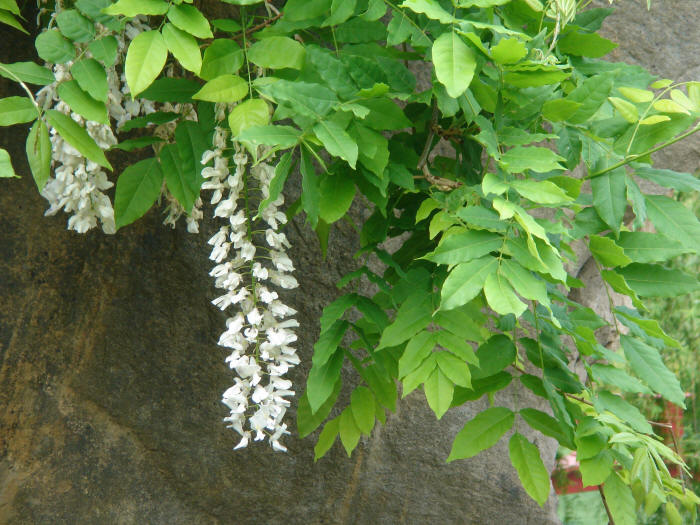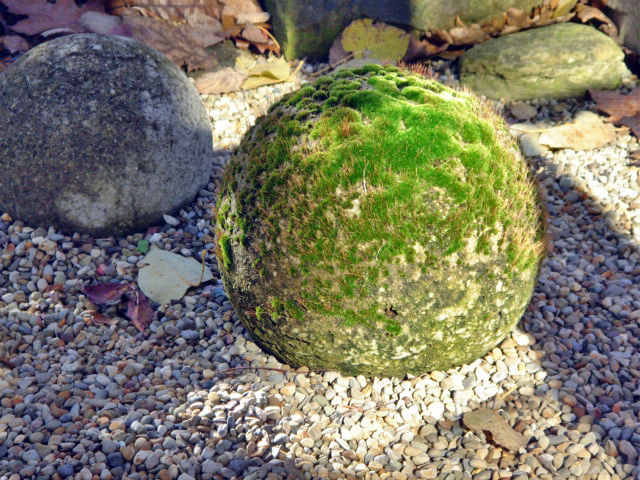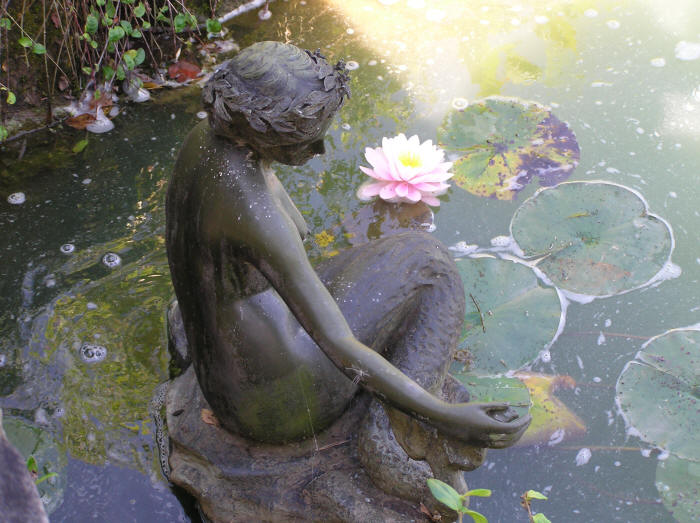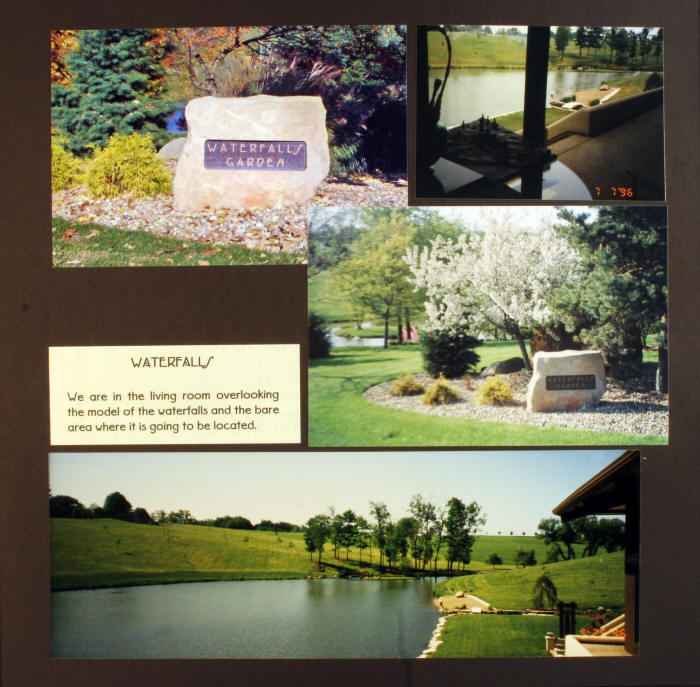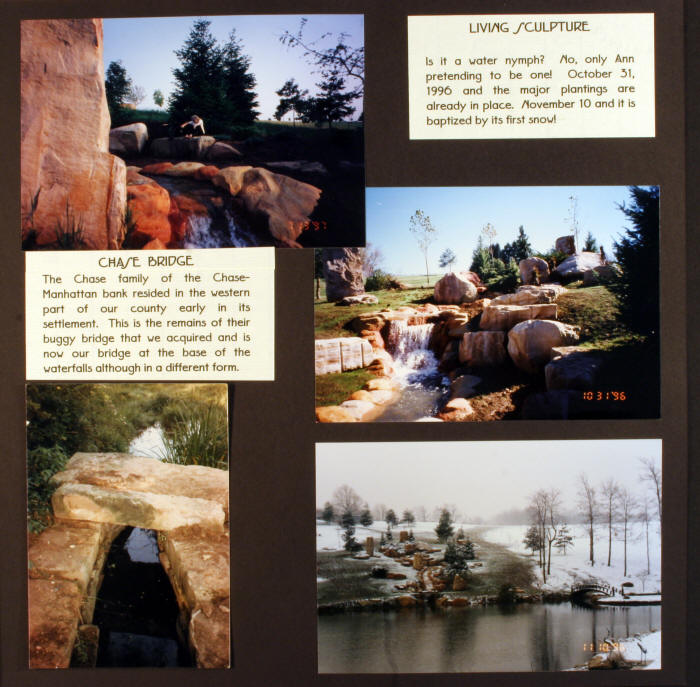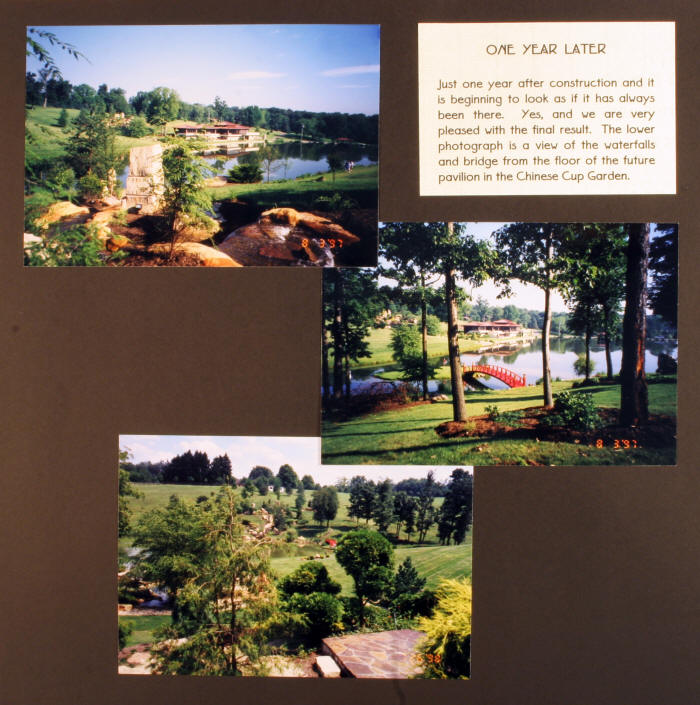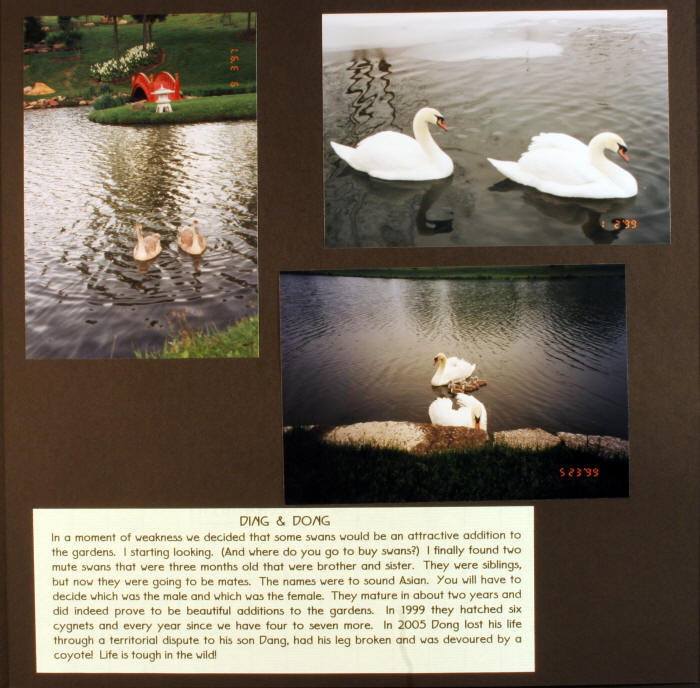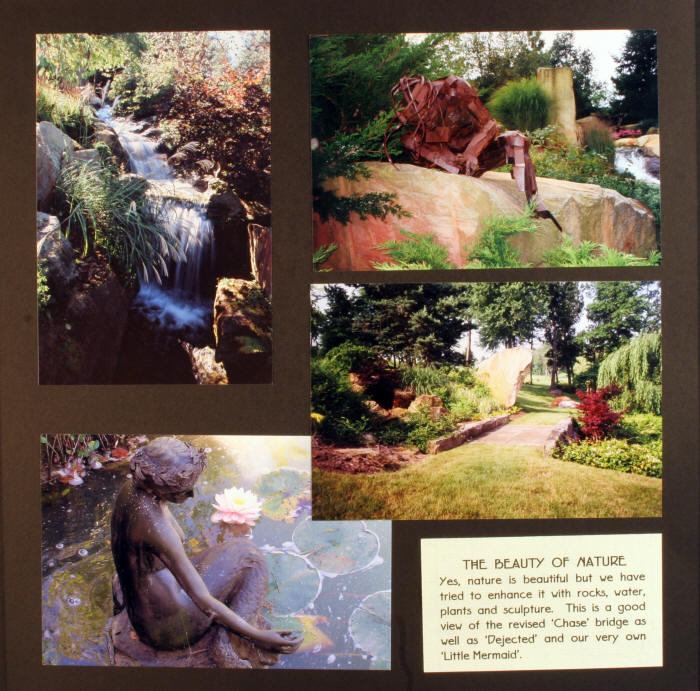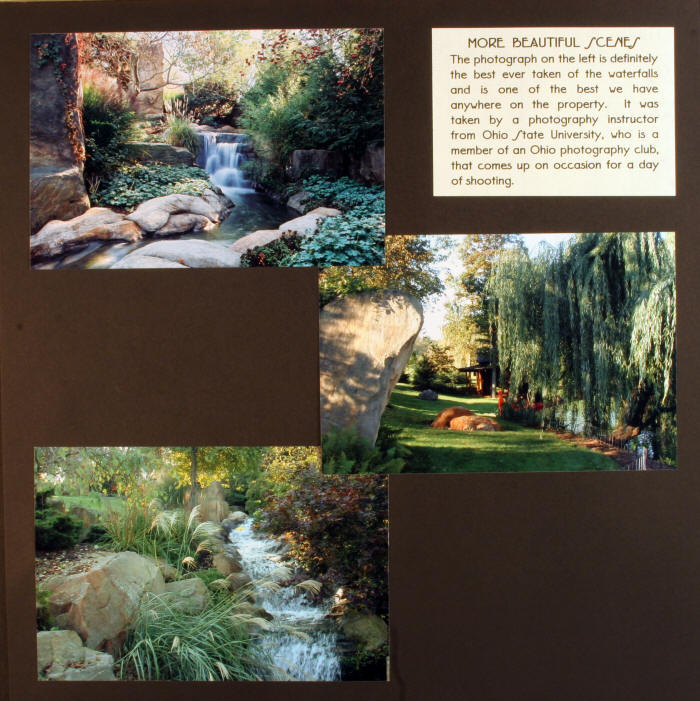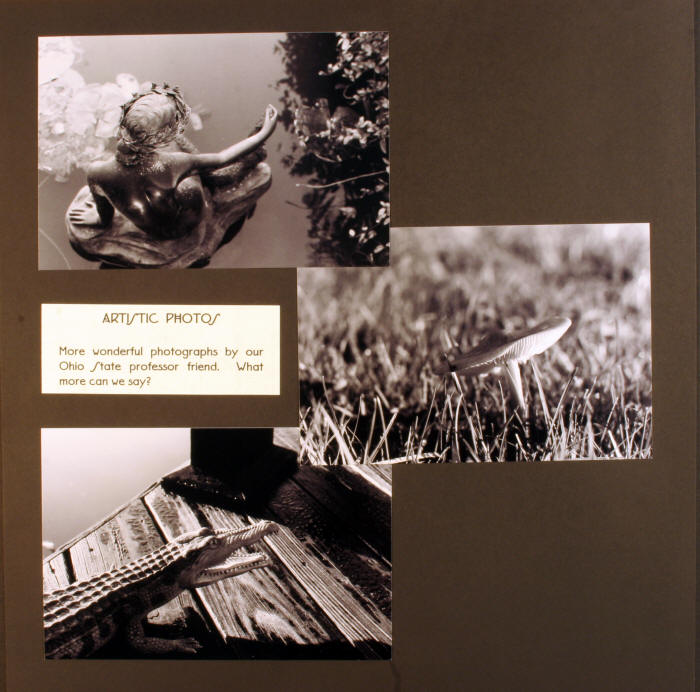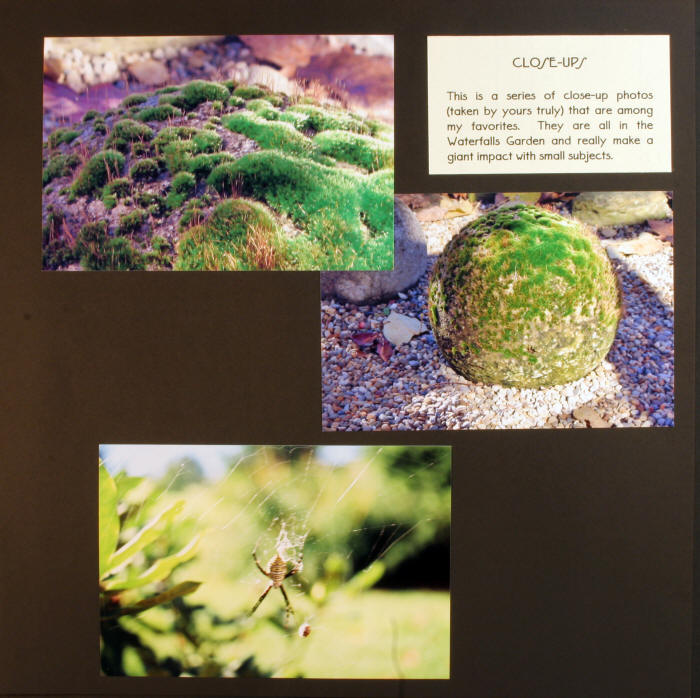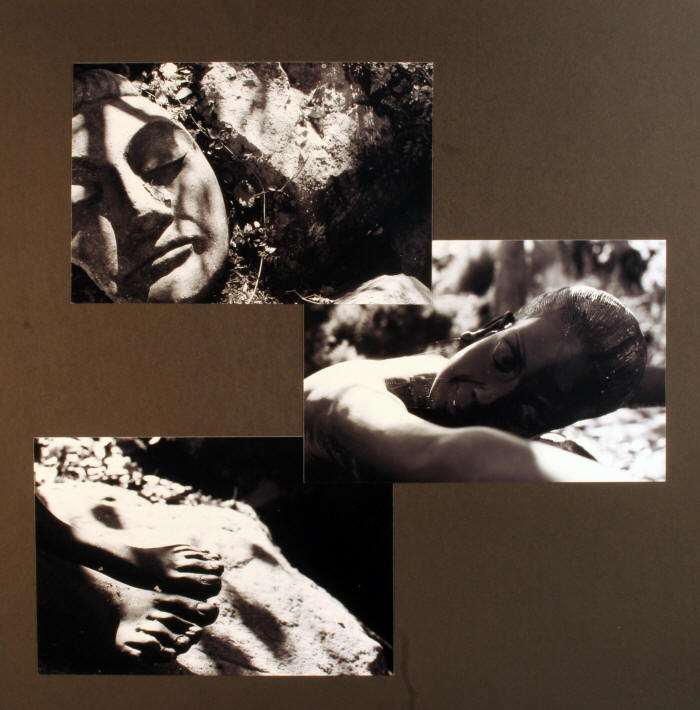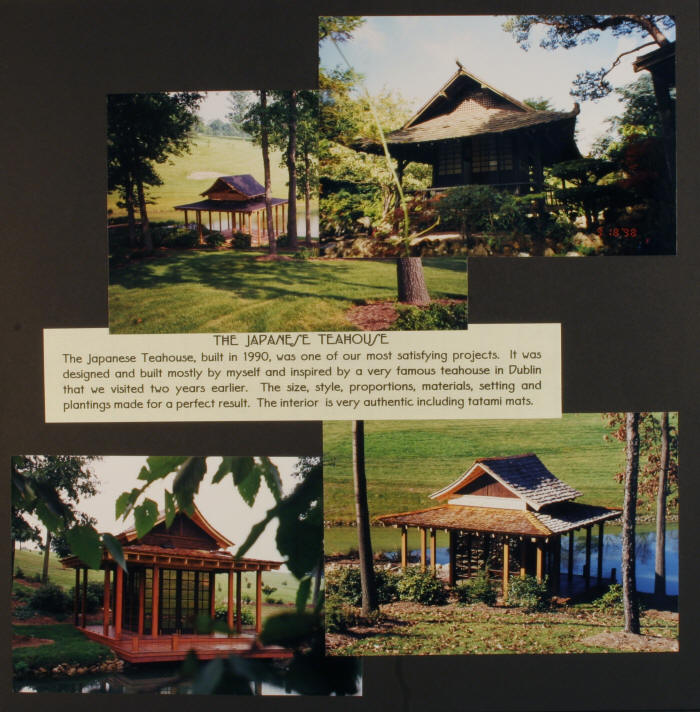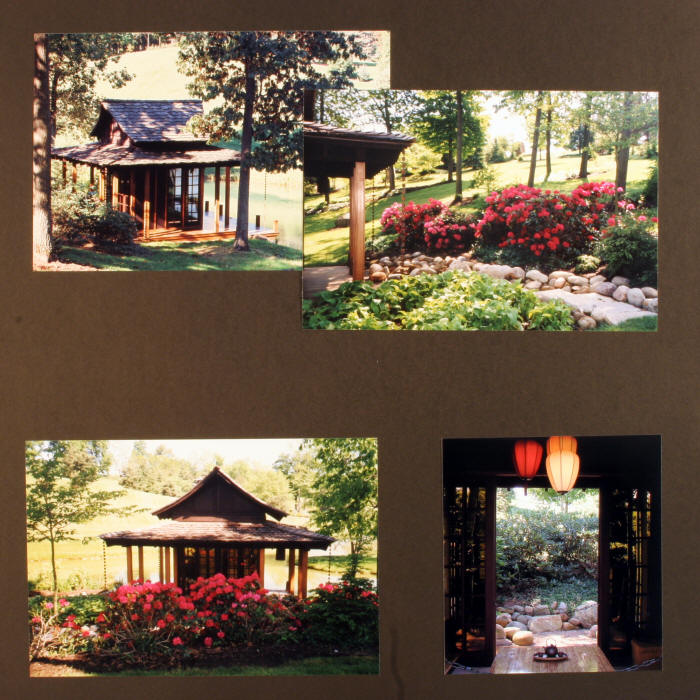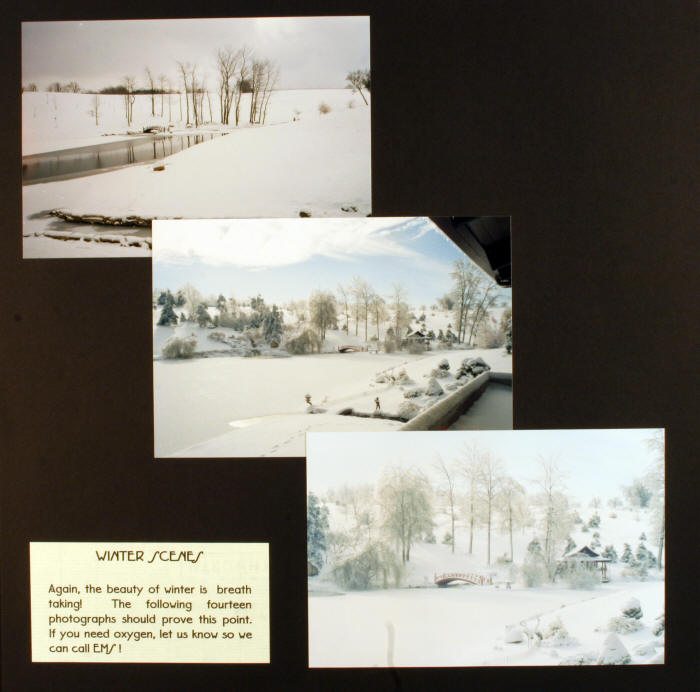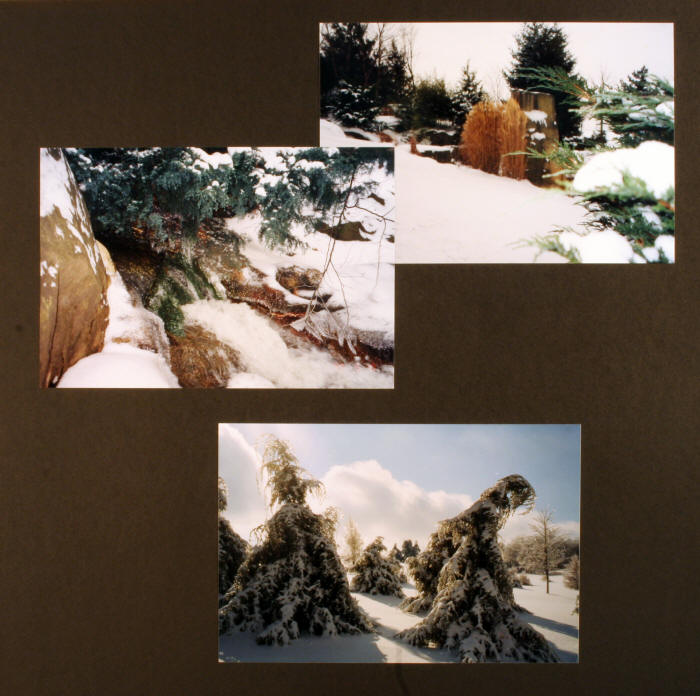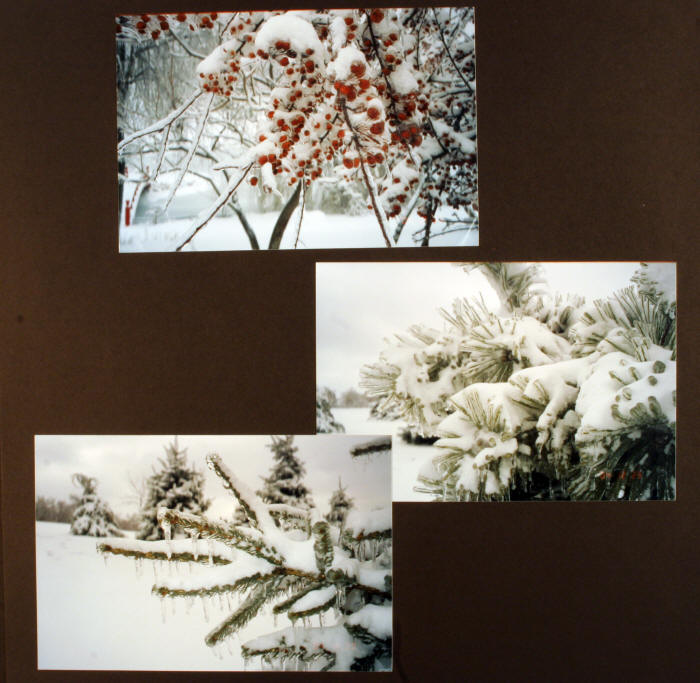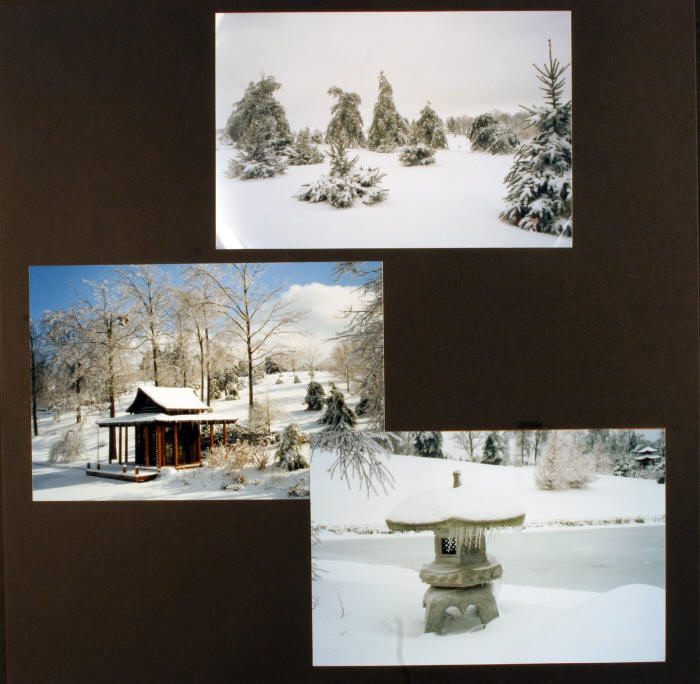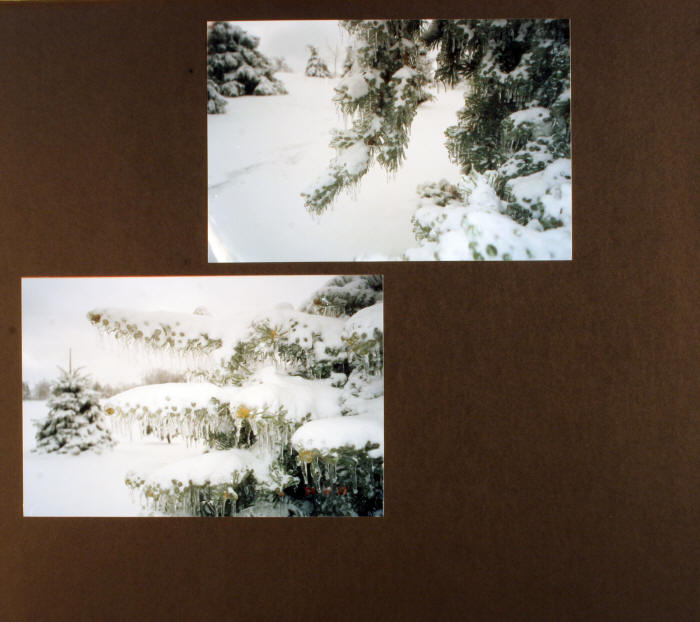
The principal feature of the Waterfalls Garden is the large waterfalls constructed in 1996. It cascades one thousand gallons every minute over its rock bed in its race to the main lake. Over one hundred feet long, it drops twenty-five feet in that distance.
On its banks are a wide variety of plantings and four pieces of sculpture. One is a steel sculpture of a woman titled ‘Dejected’ by Michael Kenneth Smith, while two bronze nudes pay homage to the roaring water. Nearly underneath the bridge is our own ‘Little Mermaid,” not as famous as the one in Copenhagen, but just as enchanting.
The cut stones used to construct the bridge over the base of the waterfalls are from an old buggy bridge from the Chase property in western Knox County. This is reputed to be the same Chase family of the banking business. The bridge is said to be well over one hundred years old.
The red arch bridge, Chinese in inspiration, spans thirty-six feet to Swan Island. The bridge was constructed in 1989 prior to the filling of the lake. The island is so named because it is home to the Mute swans that raise four to six cygnets there every spring. Also, located on the island is a large hand carved granite Japanese lantern. It is very heavy and was nearly lost to the lake in the challenge to transport it to the island by boat, being too heavy for the bridge. A large spring flows into the lake under the surface of the water at the base of the bridge. It is so large in fact that the first spring after the lake was filled (restricting the water) it actually blew out a ten by twenty foot hole on the side of the hill above it allowing the water to freely flow. Subsequent modifications were made to prevent this event from reoccurring.
The Japanese teahouse was designed as a place for the taking of tea and meditating, which is one of the primary aspects of the traditional tea ceremony. Chado, the Japanese way of tea, values four conditions: harmony, reverence, purity, and tranquility.
As you leave the garden area and enter the teahouse area you pass by a stone basin. This is where you purify yourself, both physically and spiritually with the water in preparation for Tea.
The structure itself is a quintessential 4-½ mat Japanese teahouse. The number of mats refers to the Tatami (rice straw) mats that are always three feet by six feet and determine the size of the structure. The mats are never walked on with shoes . . . only with stocking feet. This is a sign of respect and also a practical matter as the mats are easy to soil and hard to clean.
In the Southeast corner is what is known as a Tokonoma. This is a small alcove where artwork, ikebana (Japanese floral arrangements), scrolls and votives can be displayed. In one corner is a simple natural tree trunk used as a decorative post. It is called a Tokobashira and is a natural element suited to the rustic mood that is prevalent in Tea.
The teahouse was completed in 2000 and is made of completely natural materials. It is in the choice of materials and the craftsmanship with which it is assembled that the teahouse attains its greatest elegance. The decks are constructed of ipe’ . . . a very dense tropical hardwood. The doors are of edge grain hemlock and the idea of the wide openings is to bring the outdoors inside. If nothing else the Japanese are lovers of wood and nature. Under the roof overhang in the Southeast corner is a Japanese cast bronze temple bell acquired on a trip to Kyoto, Japan in 2001.
Please enjoy your visit to the Gardens and the grand vistas and intimate niches. We hope you’ll find tranquility here . . . and inspiration.

